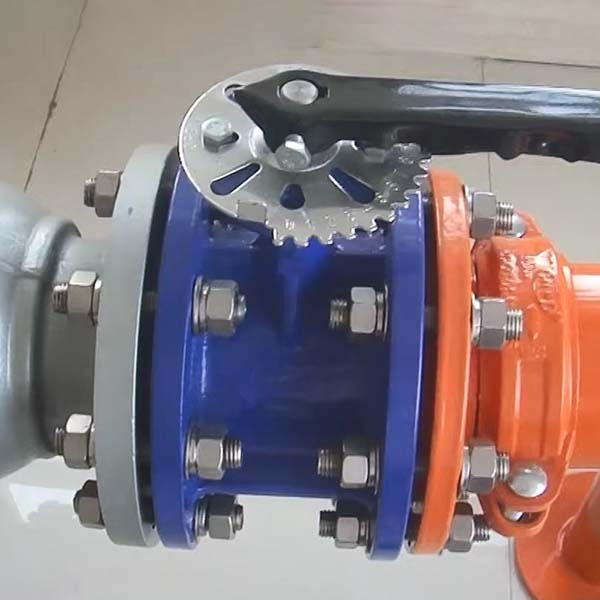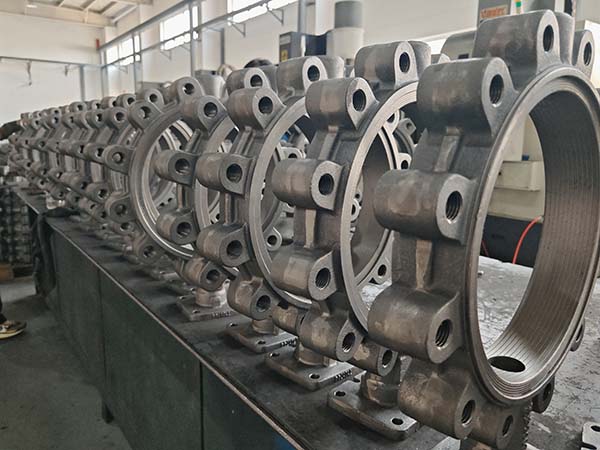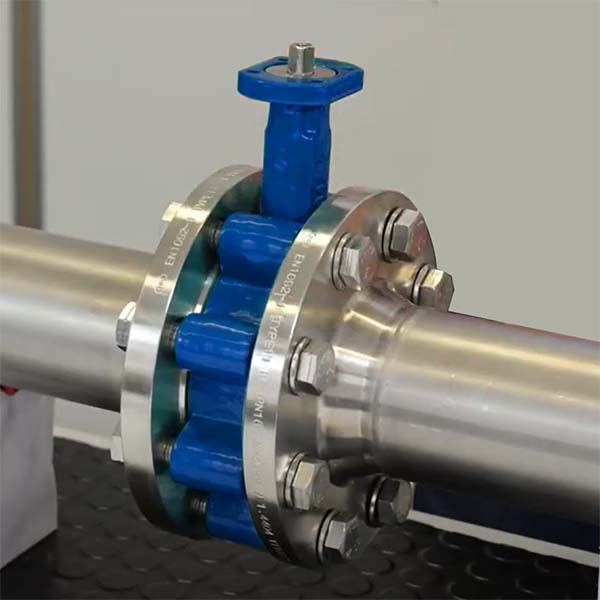When selecting the right valve for industrial, agricultural, or commercial piping systems, understanding the differences between lug butterfly valves and double flange butterfly valves is essential. Both valves are widely used in water treatment, chemical processing, HVAC, and oil and gas industries due to their compact design, cost-effectiveness, and efficient flow control. However, their structural design, installation methods, and application scenarios vary, making each suitable for specific conditions. This article explores the key differences, advantages, disadvantages, and applications of lug and double flange butterfly valves to guide your decision-making process.
1. Lug Butterfly Valve: Design and Features
Lug butterfly valves are characterized by threaded inserts, or "lugs," on the valve body, which allow direct bolting to pipe flanges. This design uses two sets of independent bolts without nuts, as the bolts thread directly into the lugs. Such a configuration is ideal for end-of-line applications, where one side of the pipeline can be disconnected without affecting the other.
Key Features of Lug Butterfly Valves
- Threaded Lugs: Lugs provide robust mounting points, enabling the valve to be secured independently to each pipe flange.
- Compact Design: Lightweight and short in length, lug valves save space, perfect for systems with limited room.
- Bidirectional Flow: Soft-sealed lug valves support flow in either direction, offering versatility.
- Easy Maintenance: The lug configuration allows one side of the pipeline to be removed for maintenance without impacting the other.
- Pressure Rating: Typically suited for low to medium-pressure applications, though pressure ratings may decrease in end-of-line service.
- Material Versatility: Available in materials like ductile iron, WCB, or stainless steel, with seat options like EPDM or PTFE for chemical resistance.
2. Double Flange Butterfly Valve: Design and Features
Double flange butterfly valves feature integrated flanges on both ends of the valve body, bolted directly to matching pipe flanges. This design ensures a leak-proof connection, making it suitable for high-pressure and large-diameter applications. Its sturdy construction withstands significant forces.
Key Features of Double Flange Butterfly Valves
- Integrated Flanges: Flanges on both ends connect to pipe flanges via bolts, ensuring a secure fit.
- Robust Structure: Made from durable materials like WCB, ductile iron, or stainless steel.
- Superior Sealing: Flange design ensures a tight seal, minimizing leak risks in critical applications.
- Bidirectional Flow: Like lug valves, double flange valves support flow in both directions.
- Large Diameter: Accommodates larger diameters compared to lug valves.
3. Lug Butterfly Valve vs. Double Flange Butterfly Valve
To make an informed choice, understanding the key distinctions between lug and double flange butterfly valves is crucial. Below is a detailed comparison of critical factors:
3.1 Common Features
- Installation Flexibility: Both allow one side of the pipeline to be disconnected without affecting the other, ideal for systems requiring frequent maintenance or sectional isolation.
- Cost Compared to Wafer Valves: Due to threaded lugs or dual flanges, both are more expensive than wafer valves.
- Shared Characteristics:
- Bidirectional Flow Support: Both valve types accommodate flow in either direction, suitable for systems with variable fluid directions.
- Material Variety: Both can be made from similar materials like carbon steel, ductile iron, or stainless steel, with seat options (e.g., EPDM or PTFE) tailored to fluids like water, chemicals, or gases.
3.2 Key Differences
3.2.1 Installation Mechanism
- Lug Butterfly Valve: Uses single-head bolts to connect to pipe flanges. The threaded lugs allow two sets of bolts to secure the valve independently without nuts, supporting easy end-of-line service and maintenance.

- Double Flange Butterfly Valve: Features integrated flanges on both ends, requiring alignment with pipe flanges and bolting. This ensures a stronger connection but complicates maintenance.
3.2.2 Installation Flexibility
- Lug Butterfly Valve: Offers greater flexibility, as one side can be disconnected without affecting the other, ideal for systems needing frequent maintenance or replacement.
- Double Flange Butterfly Valve: Requires alignment and bolting on both sides, making installation and removal time-consuming. It offers less maintenance flexibility but a more secure connection.
3.2.3 Applicable Diameters
- Lug Butterfly Valve: Typically ranges from DN50 to DN600. Single flange valves can be an alternative for space-constrained systems.
- Double Flange Butterfly Valve: Ranges from DN50 to DN1800. For larger diameters, custom solutions are available upon request.
3.2.4 Cost and Weight
- Lug Butterfly Valve: More cost-effective due to its lightweight design, reducing installation costs.
- Double Flange Butterfly Valve: Heavier and more expensive due to integrated flanges and additional material. Large-diameter double flange valves may require extra support due to their weight.
3.2.5 Maintenance and Disassembly
- Lug Butterfly Valve: Easier to disassemble and maintain, as one side can be removed without impacting the other.
- Double Flange Butterfly Valve: More labor-intensive to disassemble due to numerous bolts and precise alignment requirements.
4. Conclusion
The choice between a soft-sealed lug butterfly valve and a double flange butterfly valve depends on your system’s specific needs. Lug butterfly valves excel in applications requiring frequent maintenance and compact installation. Double flange butterfly valves, with their robust sealing, are better suited for large-diameter pipelines and critical applications. By evaluating factors like pressure, maintenance, space, and budget, you can select a valve that optimizes performance and cost-effectiveness.



